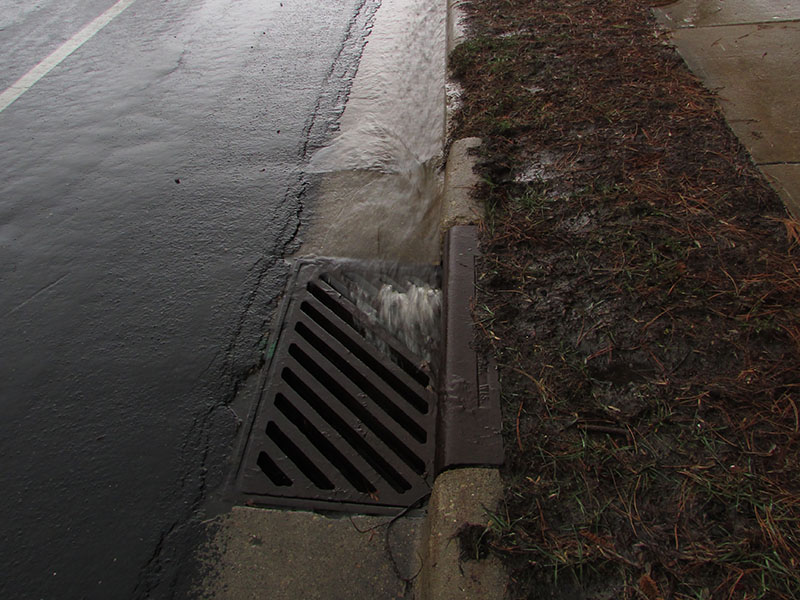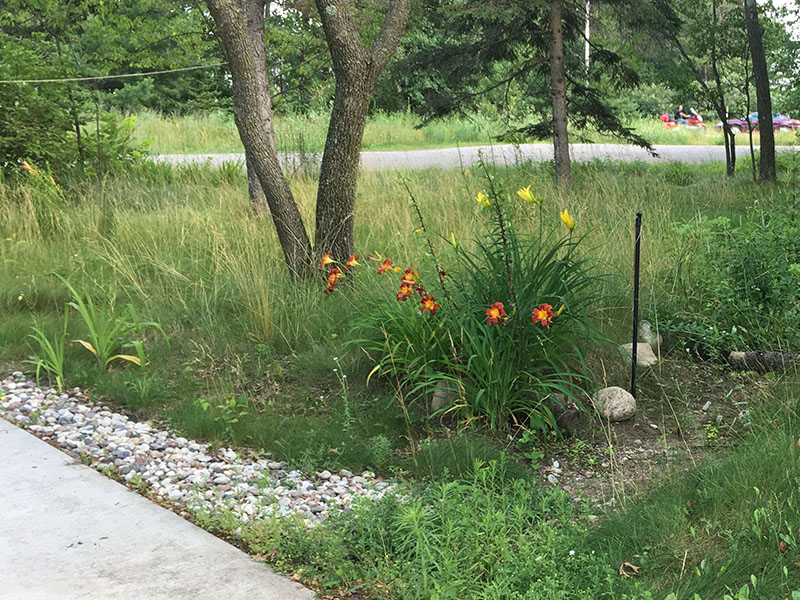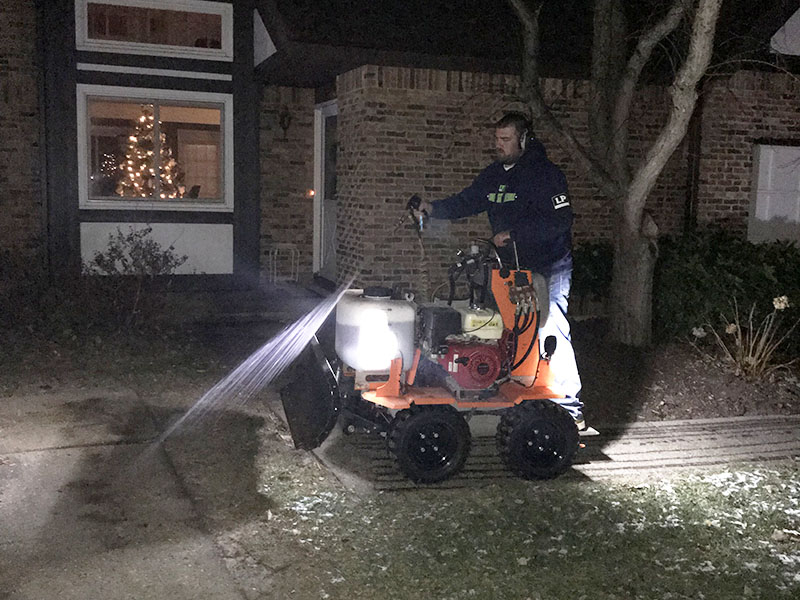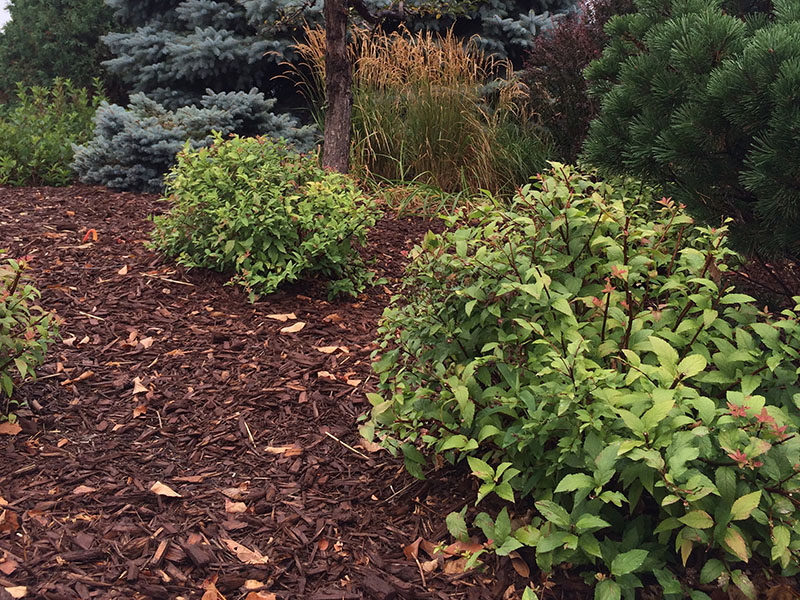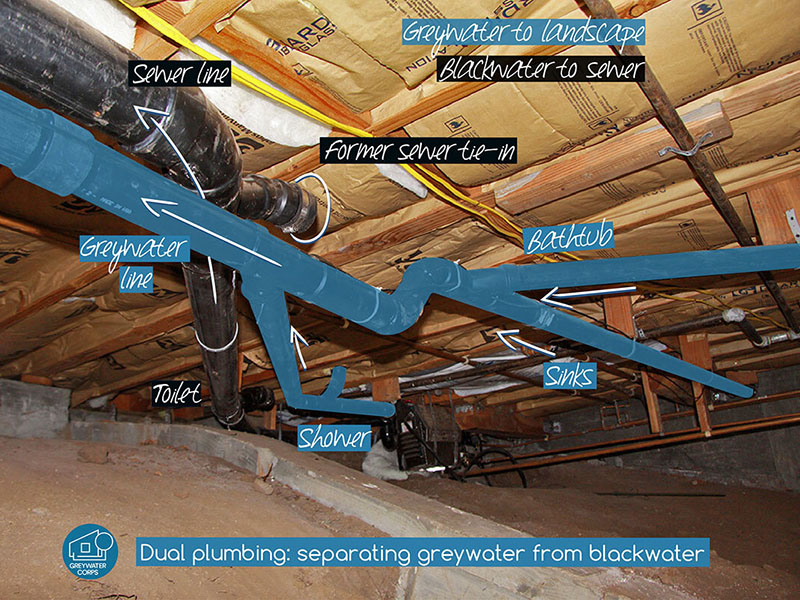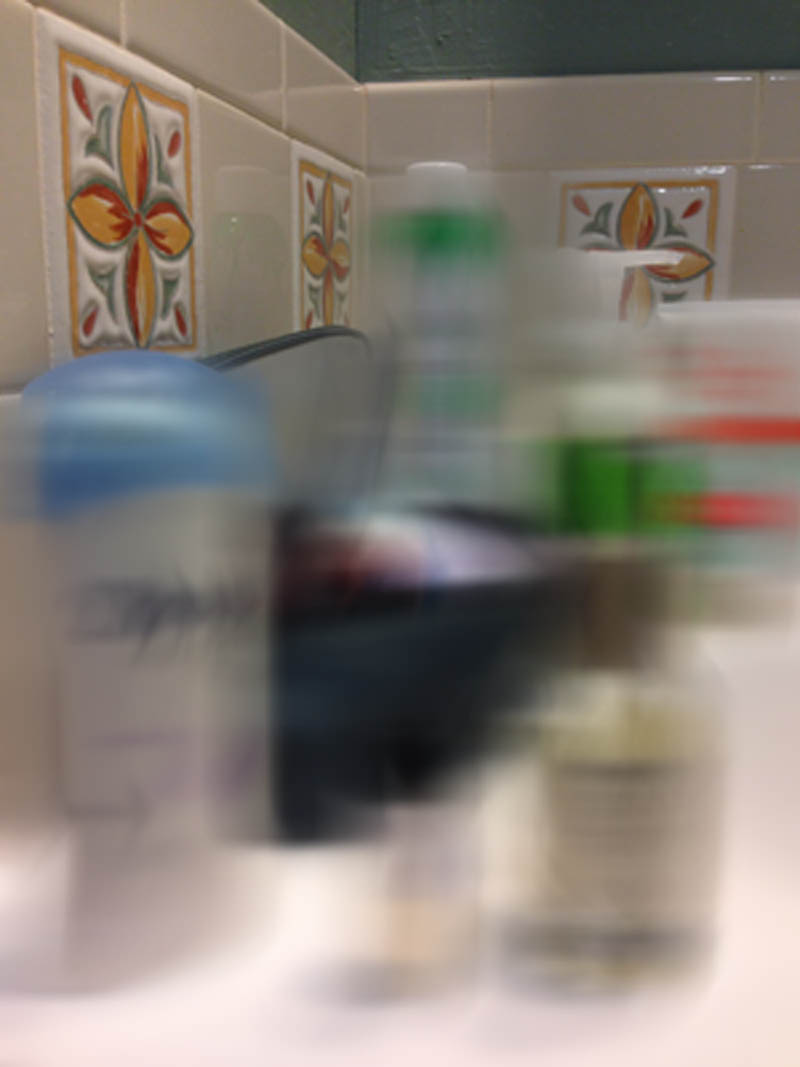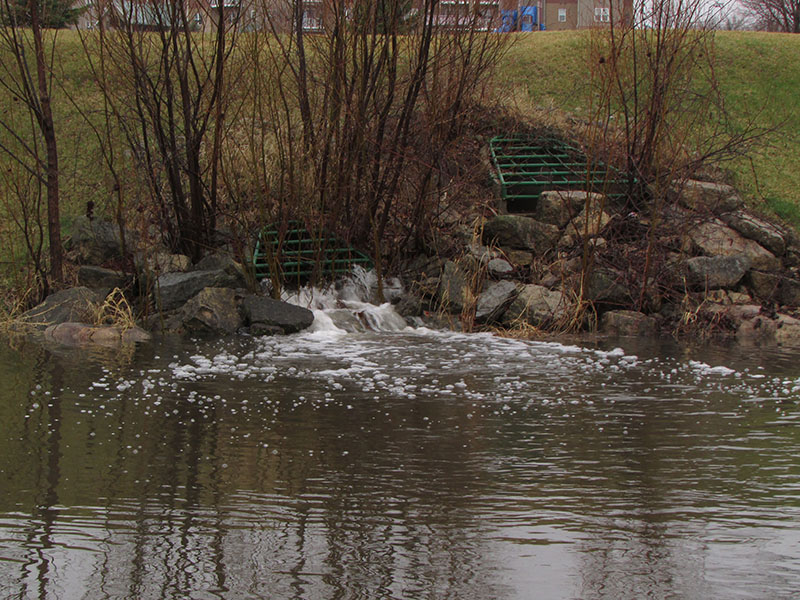
What you can do to keep water clean
Manage nitrogen in your yard
If you garden, do lawn maintenance, or farm, you’ve probably added nitrogen fertilizer to your soil. Nitrogen is the most common nutrient to limit plant growth – because plants need quite a lot of it. Nitrogen also doesn’t stick around very long in the soil. Instead, it ends up in places where we don’t want it: in groundwater, water bodies, and even the atmosphere. To keep nitrogen in soil – and in our yards, we need to reduce 4 key losses:
- Leaching
- Ammonia volatilization
- Denitrification
- Harvesting
It is best to look at the source of nitrogen/nitrate you are using, the rate at which you apply it, and when you apply it.
To delve deeper into how to better manage your lawn to reduce water pollution, read this blog about best practices in your own yard to manage nitrogen loss here and this blog about preventing nitrate pollution.
You can also help nitrogen “stick” to your soil. Nitrogen is held by organic matter, so increasing the amount in your soil is a great water-saving technique. Read this Soils Matter blog to learn how to keep more carbon – organic matter – in your yard.
Manage erosion in your yard
Erosion – the displacement of soil from one place to the other – can happen on large properties and small. When soil from your yard runs into the street, it can block storm water systems. Erosion is unsightly at best and an environmental problem at worst. But you can do some simple things to protect your yard – and our environment – from erosion. And the soil that washes out of your yard gets into stormwater systems and can harm waterbodies.
The best way to prevent erosion is by covering your soil. Bare soil is vulnerable to both wind and rain erosion. Soil needs to be covered year-round in order to be protected.
The way you landscape your yard depends on your preferences and your yard’s characteristics. If the slope of your yard is not very steep, grasses, shrubs, and mulches will collect rainfall and snowmelt. Grasses native to your region will help build soil stability. Native grasses grow long roots that tie the topsoil and subsoil together. Certain species of vegetative cover, like clover, have shallow roots and will not sufficiently stabilize your soil surface, especially on slopes. Woody shrubs are another effective type of soil mulch. Flowers and plants are also effective in preventing erosion, as well as bringing aesthetic value to your landscape.
Learn more about preventing erosion in your yard here.
Use less sidewalk salt!
For nearly 70 percent of Americans, the winter months come with nasty weather. Snow and ice storms may look beautiful, but they can make for treacherous roads and walkways. The most commonly used item for managing ice is road salt, or sodium chloride. While this salt does melt ice, when overused or mismanaged, it can become a serious environmental pollutant.
If you are concerned about the health of your soil and nearby water resources, consider reducing your dependence on road salts and other chemical deicers. The first tip to minimizing usage is to be proactive. Shoveling soon after snow or sleet has fallen is a sure way to reduce the amount of ice that forms on your driveways, stairs, and sidewalks. This, in turn, will decrease your need for deicers.
Another tip is to use only the smallest amount of salt required to clear ice from desired areas. Wetting down deicers before application can increase their efficiency and prevent them from bouncing or blowing onto soil. You can even mix your bagged salt with water and apply with a spray bottle. This is especially effective when you apply the solution before a storm, or after shoveling. This is similar to cities that are using a brine-solution before storms to reduce their use of deicers. Madison, Wisconsin, is even using a solution made with sugar beets, which also prevents ice buildup and is better for the environment.
Clay-based kitty litter and/or sand can also be used instead of, or in addition to salts, as they add traction to otherwise slippery surfaces. Lastly, consider only managing areas that get the most foot traffic. This can help you save money while reducing your overall use of road salts.
The weather outside may be frightful. So too is the impact of salts on soil and water quality, which you can read about in this blog.
Keep rainwater and snowmelt in your yard
In urban areas, stormwater systems are overwhelmed. And all the excess yard fertilizer, sidewalk salt and petroleum that leaks from your car really shouldn’t get into the stormwater system. Keeping more rainwater and snowmelt in your yard does a lot for the environment – and can be pretty, too!
One way is to plant a rain garden, which is a designated area in your yard or garden that collects and slows down runoff. Plants within the rain garden will take up water as well as slow down its movement so that it has more time to infiltrate the soil. To build a raingarden in your yard, read here.
Simple soil management within your yard can also make a big difference, especially if you focus on preventing and reducing soil compaction. Like a sponge, soil contains many pores. Compaction is the act of squeezing the soil together, which reduces the size and distribution of pores. Soil that has been compacted is not able to hold as much water as healthy soil. It is much more difficult for water to even enter compacted soils, as the surface contains fewer channels for water to flow into. To learn more about compaction’s effects on the soil, read here. The same principles apply to your yard.
Some simple steps to reducing soil compaction in your yard include:
- Limiting the amount of walking you do in your yard, especially after rain. Soil is most vulnerable to compaction when it is wet! Create designated pathways or play/rest areas and stick to them. Mulching these areas will add some extra protection for your soil. Also, do your best not to drive or park vehicles and other heavy equipment in your yard.
- Managing your soil for organic matter. The best way to do this is to leave plant matter, such as grass clippings and leaves, on your yard. They will eventually decompose and become incorporated into the soil. Organic matter will increase your soil’s water holding capacity, which is the overall amount of water that the soil can hold.
- Making sure your soil is always covered, either by deeply rooted plants or mulch. Over time, plant root growth helps soil particles stick together (called soil aggregates). This gives the soil a loose crumbly appearance and is a great sign that water can easily flow down instead of over the surface of your yard. Mulch, on the other hand, will help in troubled areas where plants do not easily grow.
These actions may not seem like a lot, but together they could make a great impact on the quality of water moving through your yard as well as the health of your soil. They help the soil capture and clean the water in your city and help the environment…just as soil was meant to do!
Reuse your greywater
In California, a company called Greywater Corps is helping homeowners reuse household water from sinks, showers and washing machines. By installing diverting piping in the crawl spaces of homes, this water can safely be reused to water home gardens and landscaping. The water is safe for plant life, and any soaps or other contaminants are cleaned by the soil. According to Josep Ferrer: “While most of our projects involve single family homes, we have also built systems at apartment buildings, schools, universities, hotels and more. Every building can find its own strategies to best manage this precious resource we call grey water.” Read a blog about a Greywater Corps project here.
What can homeowners do to reduce phosphorus pollution?
Agriculture isn’t the only source of phosphorus pollution. Urban areas also contribute, as do personal practices. There are many actions that we can take now as individuals and families to reduce phosphorus waste and loss:
- Minimize the use of cleaning products that contain phosphorus. Phosphorus use in laundry detergent was discontinued in the 1970s. But it can still be used in other household cleaners and detergents. Read the label and look for words like phosphorus, phosphate, orthophosphate, etc. Practice mindfulness as you use and discard those products.
- Always read the label on any fertilizers you use in your yard. Ask your neighbors to do the same. Reduce or eliminate the use of phosphorus fertilizers on your lawn and garden. And, just like farmers, have your soil tested regularly – maybe you can skip fertilizer altogether this year!
- Minimize runoff from your yard – avoid over-watering. Never fertilize if heavy rain is in the forecast.
- Encourage infiltration of rainwater and snowmelt water through the use of rain gardens and rain barrels.
- Keep lawn clippings and leaves in your yard and out of waterways and sewers. Mulch your garden – covered soil is healthier soil, with less runoff. This also keeps the soil from eroding off your property and reaching storm drains or municipal ditches.
- Pick up pet poop. In addition to carrying pathogens, feces have a high nutrient content, including phosphorus. Rainwater and snowmelt water can flush pet waste directly into waterways through storm sewers.
- If your house or cottage is next to a waterway or lake, maintain, stabilize and restore your shoreline to a natural state. This provides a buffer between disturbed or built-up areas and the water.
- Avoid the use of kitchen sink garbage disposals. Compost organic waste, instead, and reuse it in your yard.
- Ask your area parks manager and workplace to employ only landscaping companies that follow the 4R nutrient management strategies.
What can cities do to reduce water pollution?
Over 80% of the US population lives in urban areas. Food is imported, and “digested food” is collected and treated as “wastewater” (i.e., sewage). This creates many of the same challenges as with intensive concentrated livestock operations.
Many cities are now creating green infrastructure meant to slow the flow of water and direct it down into the soil. This can be as simple as directing a neighborhood’s storm drains into ponds. This slows the flow of water, which then soaks down into the soil. Sediments are trapped, and soil’s natural ability to clean water filters contaminants before water particles reach the groundwater level.
Permeable pavement in parking lots and sidewalks is another way cities can take action to reduce water pollution. Regular pavement makes rainwater or snowmelt run off into stormwater systems. Permeable pavement allows water to trickle down through the pavement and into the soil. It not only saves money for stormwater systems, but all the soil particles, petroleum products dripped from cars, overapplied lawn chemicals and even sidewalk salt go down into the soil, and not into stormwater.
Other cities are recovering their solid waste and turning it into compost. Compost helps soil retain water – and helps soil clean more water.
Cities can recover phosphorus from urban wastewater and recycle that phosphorus back into the food production system. This may seem like a simple solution to the challenges for sustainable phosphorus management. However, the challenge of capturing and recycling phosphorus from cities is substantial, because it’s expensive and it usually has to travel a long way. So far, the main phosphorus-related focus for most cities’ wastewater treatment systems has been on phosphorus removal. However, we also need to shift toward phosphorus recovery and recycling as a way of improving our management of this non-renewable resource.
Researchers have found ways to recover phosphorus in the form of struvite. This is being tested in agricultural systems as a way to reuse phosphorus and keep it out of our waterbodies.

